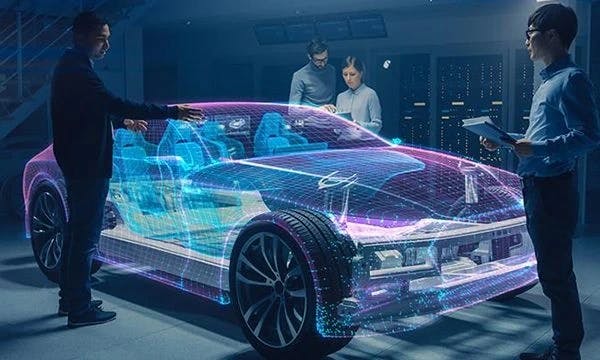From the iconic Howrah Bridge in India, built in the pre-Independence period that’s still standing tall and serving millions of commuters, to Rolls-Royce running and controlling a jet engine on hydrogen fuel instead of conventional aviation fuels, the definition of sustainable engineering has drastically changed from the 20th to 21st century
The three pillars of sustainable development—economic, social and environmental—were redefined in 2015 as part of a unified framework and adopted by all United Nations member states and named Sustainable Development Goals (SDGs).
This rise in population and a subsequent economic boost in the second half of the 20th century created severe environmental pressure and less equitable societies requiring a new view of sustainable development.
To combat this, the circular economy and related disciplines have become instrumental in helping businesses and governments implement the revised principles of sustainable development. Sustainability has now become a top objective for engineers as they make the decisions that can minimize a product’s environmental impact.
Today, sustainable engineering is described as engineering for human development. It focuses on meeting the needs of the present without compromising on the needs of future generations.
UNESCO defines it as the process of using resources in a way that does not compromise the environment or deplete what is available for future generations.
“The primary focus of sustainable engineering is to minimize the environmental impact of engineering projects and initiatives,” says Prasanna Oruganti, Associate Vice President, Industrial Manufacturing, ERS-HCLTech.
Today’s manufacturers focus on sustainable engineering, for major reasons, including:
- Reducing overall CO2 emissions
- Minimizing energy and materials consumption, increasing operational efficiency by reducing costs
- Building in recyclability and reuse, optimizing both the top and bottom line
- Improving company culture, employee engagement and customer satisfaction
- Increasing competitive advantage, strengthening the brand and building public trust
- Competing in markets with strict environment, health and safety regulations
The process of sustainable engineering includes wastes from one project being used as inputs for another, while finding a balance between the three dimensions of sustainability—incorporating environmental and social constraints, as well as taking economic considerations into engineering decisions.
“A few of the imperatives that sustainable engineering practices can impact include bringing out energy-efficient products, product optimization, recyclable materials, circular design, sustainable packaging, optimal usage of resources for manufacturing and operations, sustainable supply chain and ecosystem, product lifecycle assessments, including less CO2 emissions and supporting a greener planet,” says Oruganti.
To achieve this, sustainable engineering requires an interdisciplinary approach in all aspects of engineering.
Take for example in 2021, the world’s first 3D-printed bridge in central Amsterdam opened with its own digital twin. A network of sensors was placed across the 12-meter steel structure as part of a project led by the Turing Institute. These sensors gather data that is used to build the twin, which can then be used to analyze the performance of the structure as it comes under stress during everyday use.
Looking beyond everyday structures and into the enterprise, Amit L. Patkar, Vice President, ERS Sales at HCLTech, says: “We see diverse structures driving sustainable engineering initiatives within a company. There are a lot of enterprise-wide initiatives that aim to improve the sustainability of a company itself. These could be capturing the carbon footprint and putting in place a strategy to reduce this over time, while effectively monitoring and reporting progress as the enterprise moves forward in a sustainable direction.”
“While HCLTech ensures that the manufacturing plants and processes are operated in a sustainable manner, there are also designated teams within the organization that work actively to make the products and services offered by the company more sustainable. As an engineering partner, HCLTech strives to address both these aspects of sustainability with a strong technology- and design-backed framework,” he adds.
A recent example of sustainable engineering initiatives in action is the launch of the £7 million government-backed tech fund to decarbonize freight and boost innovation in the United Kingdom. The Rishi Sunak government launched the new fund earlier this week to help small- and medium-sized enterprises (SMEs) roll out innovative new ideas and technology across the industry, develop greener and more efficient solutions for freight movement between rail, road and maritime transport. The fund will go to nearly 36 SMBs who will then work with top leaders to develop innovations to make freight more efficient, resilient and green.
“By embracing sustainable engineering and green principles, organizations and governments become more efficient, competitive and profitable. Sustainability often ignites the innovation culture across an organization. Sustainable engineering initiatives challenge employees to reduce material usage and scrap, use of recycle the materials and reduce the usage of natural resources for operations. This will eventually lead to newer ways of addressing the problems,” adds Oruganti.
He presents an example: Most of the washing machine manufacturers are exploring new ways of reducing water consumption and detergents usage while improving the cleanliness of the clothes during washing. Companies are even looking at improving the life of the fabric through innovation.
It’s not only governments and businesses in the private sector prioritizing these types of initiative. The world’s leading academic institutions, like Oxford University, are running Sustainable Engineering summer courses.
Building a green future at the design stage
In a report, Frost & Sullivan wrote about new-age technologies, such as IoT, digital twins and integrated workplace management systems (IWMS), which are essential materials in the development of green buildings. It also provides insight into how an IWMS can help organizations address their sustainability challenges.
The Hindu in June 2022 reported that the integration of Building Information Modelling (BIM) that includes the use of digital twins with energy performance is vital in achieving sustainability throughout the life of a building. This involves collecting information about energy consumption, greenhouse gas emissions, water consumption, construction waste and recyclability of building waste.
For future building developments and other products, it’s vital that sustainability is engineered into them at the design stage.
“More than 80% of the sustainability aspects of a product are conceived at the design stage. So, a product born sustainable—with sustainability as a core part of design—has four times more chance of hitting the green goal. Furthermore, this will also be achieved within less cost and time as against a product designed otherwise,” adds Patkar.
The role of HCLTech in the green revolution
HCLTech has been a pioneer in Engineering and R&D Services for four and a half decades working across multiple business to address the sustainable engineering needs from cradle to grave.
“There are several instances where we are helping our customers during product development by employing sustainable engineering practices. Consumer appliance and mobile device industries are extremely competitive with a shorter product life cycle development, feature versus cost pressure and increased focus on sustainability. Getting the products to shelf as fast as possible with optimized cost is the focus of many OEMs,” says Oruganti.
HCLTech has an industry-tested framework and a crucial role to play in making products greener from inception. Its sustainable engineering practices caters across the various phases of product lifecycle based on the tenets of Design for Excellence (DFX) that can be customized for a variety of scenarios and design rules, such as Design for Manufacturing (DFM), Design for Sustainability (DFS), Design for Serviceability, sustainable manufacturing and operations, sustainable supply chain, sustainable packaging, connected factory and digital platforms.
“The solution captures the expected ‘greenness’ of the product right at the design stage and guides the R&D and design teams to incorporate this into the early stages right from concept to commercialization. There are several design rules based on the 6R principles that have been implemented to ensure the product complies to the environmental expectations and stands the test of time throughout its life cycle,” says Patkar.
Another example of leveraging a technology-based initiative is HCLTech’s Net-Zero Intelligent Operations (NIO), which is the winner of Cisco Global Digital Sustainability Challenge. It ensures a transparent and well-aggregated view of operations across geographies and manufacturing sites that enables a critical view for an enterprise to track and orient towards “green” operations.
“Due to the rise of conscious capitalism, many consumers and investors consider the impact that a business creates on the environment. Going forward, sustainable businesses will seek to create long-term stakeholder value by factoring social, economic and environmental impacts into strategic and operational decisions. Hence sustainable engineering practices have a huge impact on a company’s reputation as well as the companies ESG risk ratings,” Oruganti concludes.





